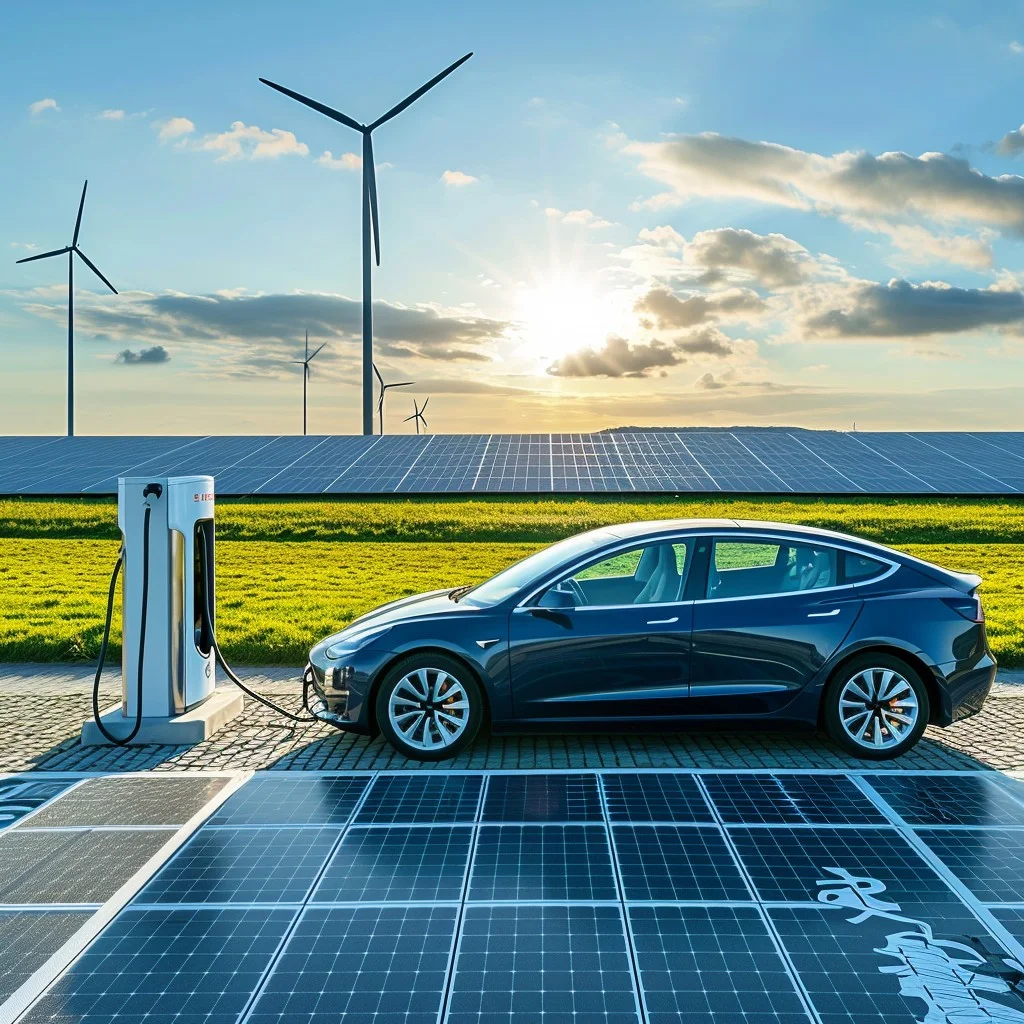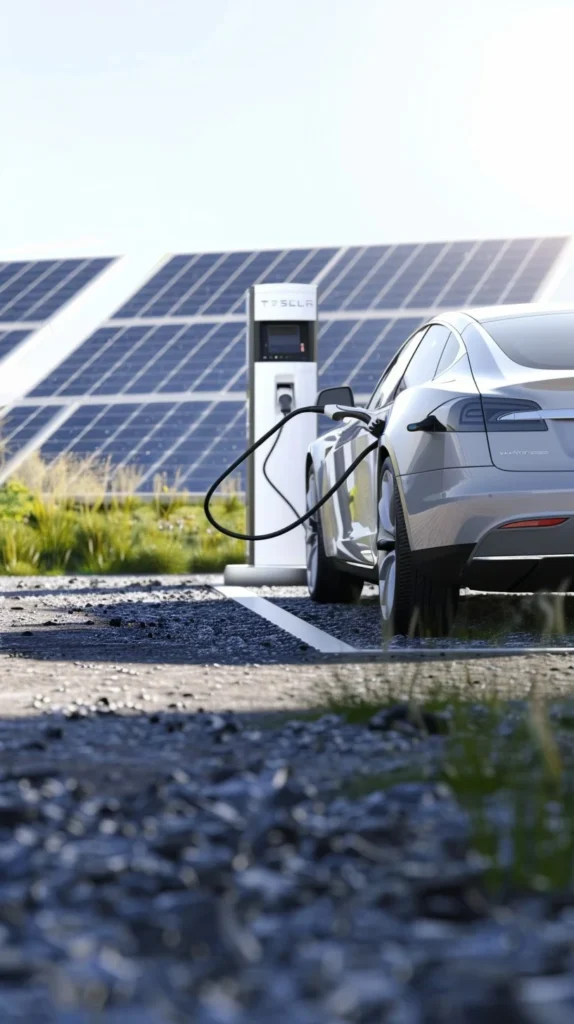
As the world grapples with climate change and urban congestion, electric and autonomous vehicles (EVs and AVs) are emerging as pivotal solutions to transform transportation systems. These innovations promise to reshape urban landscapes, enhance mobility, and contribute to a more sustainable future. This article explores the potential of electric and autonomous vehicles in revolutionizing urban transport while addressing environmental concerns.

1. The Rise of Electric Vehicles
The automotive industry is undergoing a significant transformation, with electric vehicles (EVs) leading the charge towards a more sustainable future. As concerns about climate change and air pollution continue to escalate, the demand for cleaner, greener alternatives to traditional gasoline-powered cars has surged. This article explores the rise of electric vehicles, examining their benefits, technological advancements, market trends, and the challenges they face.
The Benefits of Electric Vehicles
- Environmental Impact: One of the most compelling reasons for the rise of electric vehicles is their lower environmental impact. EVs produce zero tailpipe emissions, which contributes to improved air quality in urban areas. Furthermore, as renewable energy sources become more prevalent, the overall carbon footprint associated with charging electric vehicles continues to decrease.
- Cost Savings: While the initial purchase price of electric vehicles can be higher than that of conventional vehicles, the long-term savings are significant. EVs have lower operating costs due to reduced fuel expenses and less maintenance, as they have fewer moving parts than traditional vehicles.
- Performance: Electric vehicles are known for their impressive acceleration and smooth driving experience. The instant torque provided by electric motors allows for quick starts and a responsive feel, making EVs a favorite among drivers who prioritize performance.
Technological Advancements
The rise of electric vehicles has been fueled by significant technological advancements, particularly in battery technology. Modern electric vehicles are equipped with lithium-ion batteries, which offer improved energy density and faster charging times compared to earlier models. Innovations such as solid-state batteries are on the horizon, promising even greater efficiency and safety.
Additionally, advancements in charging infrastructure are making it easier for consumers to adopt electric vehicles. Fast-charging stations are becoming increasingly widespread, allowing drivers to recharge their vehicles in a matter of minutes rather than hours. This growing network of charging stations alleviates range anxiety, a common concern for potential EV buyers.
Market Trends
The electric vehicle market is experiencing rapid growth. According to recent statistics, global electric vehicle sales have surged over the past decade, with a record number of new models hitting the market. Major automotive manufacturers are investing heavily in electric vehicle development, with many pledging to transition their fleets to electric by the end of the decade.
Government incentives and policies are also playing a crucial role in driving the adoption of electric vehicles. Many countries offer tax credits, rebates, and grants to encourage consumers to make the switch. Additionally, stricter emissions regulations are pushing manufacturers to prioritize electric vehicle production.
Challenges Ahead
Despite the promising rise of electric vehicles, several challenges remain. One of the most significant obstacles is the need for a robust and accessible charging infrastructure. While progress is being made, more charging stations are needed, particularly in rural and underserved areas.
Another challenge is the environmental impact of battery production. While EVs reduce emissions during operation, the production of lithium-ion batteries requires significant energy and raw materials. Efforts to develop more sustainable battery technologies and recycling processes are essential for minimizing this impact.
The rise of electric vehicles represents a pivotal moment in the automotive industry, reflecting a broader shift towards sustainability and innovation. As technology continues to advance and consumer demand grows, electric vehicles are set to become a dominant force in transportation. While challenges remain, the future of electric vehicles looks bright, paving the way for cleaner, greener, and more efficient transportation options for generations to come.

2. The Emergence of Autonomous Vehicles
The emergence of autonomous vehicles (AVs) marks a transformative shift in the transportation landscape, promising to redefine how we move from one place to another. With advancements in technology and an increasing emphasis on safety, efficiency, and sustainability, the automotive industry is racing toward a future where self-driving cars could become a common sight on our roads. This article explores the evolution of autonomous vehicles, their benefits, challenges, and the future they hold.
Understanding Autonomous Vehicles
Autonomous vehicles are equipped with advanced technologies that enable them to navigate and operate without human intervention. Ranging from Level 1 (driver assistance) to Level 5 (full automation), these vehicles utilize a combination of sensors, cameras, radar, and artificial intelligence (AI) to perceive their surroundings, make decisions, and execute driving tasks. Major technology companies and automotive manufacturers are actively developing AV technologies, working toward achieving full autonomy.
Benefits of Autonomous Vehicles
- Safety Improvements: One of the primary motivations behind the development of autonomous vehicles is the potential for enhanced safety. Human error is a leading cause of road accidents, accounting for approximately 94% of crashes. AVs aim to eliminate such errors through precise algorithms and real-time data analysis, significantly reducing the number of accidents and saving lives.
- Increased Efficiency: Autonomous vehicles have the potential to optimize traffic flow and reduce congestion. With the ability to communicate with each other and traffic management systems, AVs can make real-time adjustments to their routes and speeds, leading to smoother traffic patterns. This efficiency can result in shorter travel times and lower fuel consumption.
- Accessibility: AVs can provide increased mobility for individuals who are unable to drive, including the elderly and disabled. By offering a reliable and safe mode of transportation, autonomous vehicles can enhance the quality of life for many, allowing them to maintain independence and participate more fully in society.
- Environmental Impact: Many autonomous vehicles are being designed as electric vehicles, further contributing to environmental sustainability. By reducing traffic congestion and optimizing driving patterns, AVs can help lower emissions and decrease the carbon footprint of transportation.
Challenges Facing Autonomous Vehicles
Despite their potential, the emergence of autonomous vehicles also presents several challenges that must be addressed:
- Regulatory Hurdles: The development and deployment of AVs face regulatory challenges as governments strive to create comprehensive policies and standards. Establishing clear guidelines for testing, liability, and safety will be crucial to facilitate the widespread adoption of autonomous vehicles.
- Public Acceptance: Gaining public trust in autonomous technology is essential for its success. Many individuals harbor concerns about safety, privacy, and the ethical implications of AI decision-making. Public education and transparent communication about the benefits and risks associated with AVs will be necessary to foster acceptance.
- Technical Limitations: While technology has made significant strides, fully autonomous driving in complex urban environments remains a challenge. AVs must be able to navigate unpredictable conditions, such as inclement weather, pedestrians, and other drivers’ behaviors. Continuous advancements in AI and sensor technology are needed to overcome these limitations.
- Cybersecurity Risks: As vehicles become more connected, they also become more vulnerable to cyber threats. Ensuring the security of autonomous vehicles against hacking and data breaches is critical to maintaining user trust and safety.
The Future of Autonomous Vehicles
The future of autonomous vehicles is bright, with ongoing research and development pushing the boundaries of what is possible. As technology continues to evolve, we can expect to see increased integration of AVs into our transportation systems, with pilot programs and limited deployments leading the way. Major cities and tech hubs around the world are already testing autonomous shuttles and delivery vehicles, providing valuable insights into their operation in real-world scenarios.
In the coming years, we may witness a gradual transition towards a hybrid model where human-driven and autonomous vehicles coexist. As public infrastructure adapts and regulations evolve, the widespread adoption of AVs could lead to significant changes in urban planning, transportation policies, and societal norms.
The emergence of autonomous vehicles represents a significant leap forward in transportation technology, offering the promise of safer, more efficient, and environmentally friendly mobility solutions. While challenges remain, the potential benefits of AVs are compelling enough to drive continued investment and innovation in this field. As we look toward the future, it is clear that autonomous vehicles have the potential to transform our lives and reshape the way we navigate the world around us.

3. Urban and Eco-Friendly Transport Solutions
As urbanization continues to rise, cities around the world are facing significant challenges related to traffic congestion, air pollution, and environmental sustainability. In response, urban planners and policymakers are increasingly exploring eco-friendly transport solutions to create cleaner, more efficient, and more livable urban environments. This article delves into various sustainable transport options, their benefits, and the importance of transitioning to greener mobility systems.
1. Public Transportation Systems
Public transportation is one of the most effective ways to reduce the environmental impact of urban travel. Efficient and reliable public transport systems, such as buses, trams, and subways, can significantly decrease the number of individual cars on the road, thereby lowering greenhouse gas emissions and traffic congestion.
- Benefits: Public transportation reduces air pollution, decreases reliance on fossil fuels, and offers an affordable travel option for residents. It also promotes social equity by providing access to transportation for those who may not own a vehicle.
2. Cycling Infrastructure
Encouraging cycling as a primary mode of transport is an essential component of eco-friendly urban mobility. Cities are investing in the development of safe and accessible cycling infrastructure, including dedicated bike lanes, bike-sharing programs, and secure parking facilities.
- Benefits: Cycling is a zero-emission mode of transport that promotes physical health and reduces traffic congestion. Moreover, it can improve the quality of life in urban areas by creating a more pleasant and vibrant atmosphere.
3. Electric Vehicles (EVs)
The shift towards electric vehicles is gaining momentum as cities seek to reduce their carbon footprints. Many municipalities are implementing incentives for EV adoption, such as tax rebates, charging station installations, and low-emission zones.
- Benefits: Electric vehicles produce zero tailpipe emissions, significantly reducing urban air pollution. Furthermore, as the grid becomes greener with more renewable energy sources, the overall environmental impact of EVs continues to decrease.
4. Carpooling and Ridesharing
Carpooling and ridesharing platforms provide flexible and convenient alternatives to solo driving. By connecting passengers traveling in the same direction, these services can reduce the number of vehicles on the road.
- Benefits: Carpooling minimizes fuel consumption and emissions, and it can also lower transportation costs for individuals. Additionally, it fosters a sense of community among participants.
5. Integrated Mobility Solutions
The concept of integrated mobility focuses on creating seamless connections between different modes of transport, such as public transit, cycling, and walking. Mobility-as-a-Service (MaaS) platforms enable users to plan, book, and pay for multiple modes of transportation in one app.
- Benefits: Integrated mobility solutions simplify travel planning and enhance the overall user experience. By promoting the use of multiple sustainable transport options, cities can reduce congestion and emissions while improving accessibility.
6. Pedestrian-Friendly Urban Design
Creating pedestrian-friendly urban spaces is crucial for promoting eco-friendly transport solutions. Cities are increasingly prioritizing walkability by designing streetscapes that encourage walking, such as wider sidewalks, pedestrian-only zones, and attractive public spaces.
- Benefits: Enhanced walkability not only reduces reliance on motorized transport but also encourages social interaction and community engagement. Walkable cities tend to be healthier, more vibrant, and more economically viable.
Urban and eco-friendly transport solutions are essential for addressing the challenges posed by urbanization, climate change, and environmental degradation. By investing in public transportation, cycling infrastructure, electric vehicles, and integrated mobility solutions, cities can create more sustainable and livable urban environments. As we move toward a greener future, it is crucial for stakeholders, including governments, businesses, and communities, to collaborate in developing innovative transport strategies that prioritize both environmental sustainability and the well-being of urban residents.
4. Challenges and Considerations
As cities around the world seek to implement urban and eco-friendly transport solutions, they face a range of challenges and considerations that can hinder progress. While the transition to sustainable mobility is essential for reducing environmental impact and improving urban livability, several obstacles must be addressed to ensure successful implementation. This article explores the key challenges and considerations that stakeholders must navigate when pursuing eco-friendly transport initiatives.
1. Infrastructure Limitations
One of the most significant challenges in implementing eco-friendly transport solutions is the existing infrastructure. Many cities were designed with car-centric models in mind, resulting in limited space for public transport systems, cycling lanes, and pedestrian pathways.
- Considerations: Urban planners must assess current infrastructure and develop plans for retrofitting or rebuilding to accommodate sustainable transport options. This may require substantial investment and collaboration between various governmental agencies.
2. Funding and Investment
Securing adequate funding for eco-friendly transport initiatives is often a major hurdle. Sustainable transport projects typically require significant upfront investment, and governments may face budget constraints or competing priorities.
- Considerations: Innovative funding models, such as public-private partnerships, grants, and community engagement, can help attract investment. Additionally, demonstrating the long-term economic benefits of sustainable transport can bolster support for funding initiatives.
3. Public Acceptance and Behavior Change
Gaining public support for eco-friendly transport solutions is crucial, yet challenging. Residents may be resistant to changes in their commuting habits, particularly if they perceive sustainable options as less convenient or comfortable.
- Considerations: Public awareness campaigns and community engagement are essential for educating residents about the benefits of sustainable transport. Initiatives such as pilot programs or trial periods can help build trust and demonstrate the effectiveness of new solutions.

4. Policy and Regulation
The successful implementation of eco-friendly transport solutions often relies on supportive policies and regulations. However, navigating the political landscape can be complex, as stakeholders may have differing priorities and interests.
- Considerations: Policymakers must create a regulatory framework that incentivizes sustainable transport while addressing potential pushback from stakeholders, including businesses and residents. Collaborating with various stakeholders to develop inclusive policies can foster a sense of ownership and shared responsibility.
5. Equity and Accessibility
Ensuring that eco-friendly transport solutions are equitable and accessible for all residents is a critical consideration. Marginalized communities may face barriers to accessing sustainable transport options, exacerbating existing inequalities.
- Considerations: Transport planners should prioritize inclusivity by designing solutions that cater to the diverse needs of all residents. This may include providing affordable public transportation options, enhancing accessibility for individuals with disabilities, and improving service in underserved areas.
6. Technological Integration
The integration of new technologies, such as Mobility-as-a-Service (MaaS) platforms and electric vehicle charging infrastructure, presents both opportunities and challenges. Ensuring that these technologies are compatible with existing systems and accessible to users is essential for their success.
- Considerations: Collaboration between technology providers, transport agencies, and local governments is crucial for developing interoperable systems. Ongoing user feedback can help refine these technologies and enhance the overall user experience.
While the transition to urban and eco-friendly transport solutions presents several challenges, addressing these obstacles is vital for creating sustainable and livable cities. By considering infrastructure limitations, funding opportunities, public acceptance, policy frameworks, equity, and technological integration, stakeholders can develop effective strategies for overcoming hurdles. Ultimately, a collaborative approach that engages communities, businesses, and governments will be key to advancing eco-friendly transport initiatives and fostering a more sustainable urban future.
Conclusion
Electric and autonomous vehicles represent the future of urban and eco-friendly transport, offering innovative solutions to the pressing challenges of climate change and urban congestion. By harnessing the benefits of EVs and AVs, cities can pave the way for a more sustainable, efficient, and inclusive transportation landscape. As technology continues to advance and infrastructure adapts, the vision of a cleaner, safer, and more connected future is within reach. Embracing these changes will be crucial for ensuring a livable environment for generations to come.





